
The La Fayette Escadrille was the name of the French Air Force unit escadrille N 124 during the First World War (1914–1918). This escadrille of the Aéronautique Militaire was composed largely of American volunteer pilots flying fighters. It was named in honor of the Marquis de Lafayette, French hero of the American Revolutionary War. In September 1917, the escadrille was transferred to the United States Army under the designation 103rd Aero Squadron. In 1921, the French Air Force recreated a N124 unit who claimed lineage from the war-time La Fayette escadrille and is now part of the escadron 2/4 La Fayette.

The Nieuport 17 C.1 is a French sesquiplane fighter designed and manufactured by the Nieuport company during World War I. An improvement over the Nieuport 11, it was a little larger than earlier Nieuports and better adapted to the more powerful engine than the interim Nieuport 16. Aside from early examples, it had the new Alkan-Hamy synchronization gear, permitting the use of a fuselage-mounted synchronised Vickers gun firing through the propeller disc.

The Polish Air Forces was the name of the Polish Air Forces formed in France and the United Kingdom during World War II. The core of the Polish air units fighting alongside the Allies were experienced veterans of the 1939 invasion of Poland. They contributed to the Allied victory in the Battle of Britain and Allied air operations during the war.

Jan Eugeniusz Ludwig Zumbach was a Polish-Swiss fighter pilot who became an ace and squadron commander during the Second World War. During the Cold War, he became a mercenary in Africa and played a key role in forming the air forces of the breakaway states of Katanga and Biafra.

Polish 7th Air Escadrille, better known as the Kościuszko Squadron, was one of the units of the Polish Air Force during the Polish-Soviet War of 1919-1921. Formed in late 1918, it was re-formed in late 1919 from US volunteers. It was one of the most active Polish squadrons in the war.
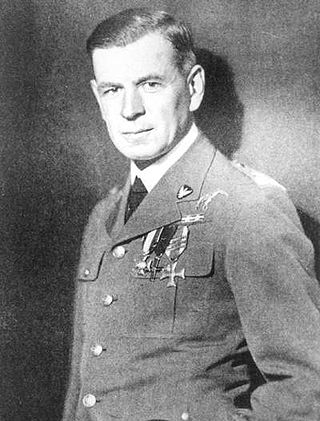
Ludomił Antoni Rayski was a Polish engineer, pilot, military officer and aviator. He served as the commander of the Polish Air Force between 1926 and 1939, being responsible for modernization of Polish military aviation. Throughout his life he also served in the Austro-Hungarian Army, Polish Legions, Turkish Army, Turkish Air Force, French Air Force, French Foreign Legion and Royal Air Force. He was also known as one of the most colourful personalities of inter-war Poland - and one of its least submissive officers.
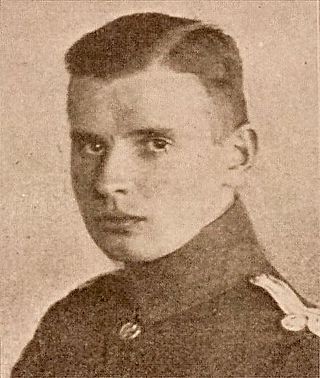
Mieczysław Sylwester Garsztka was a Polish pilot and a flying ace of the German air force during World War I and later the Polish air force during the Polish-Ukrainian War.
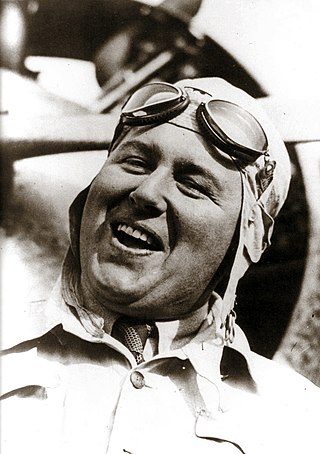
Bolesław Orliński was a Polish aviator, military, sports and test pilot.

Major Josef Mai Iron Cross First and Second Class, was a World War I fighter pilot credited with 30 victories.

Capitaine Pavel Vladimirovich Argeyev, also known as Paul d'Argueev and The Eagle of Crimea, was a Russian-born flying ace of World War I, serving the French Armée de l'Air and Imperial Russian Air Service. Initially a high-ranking officer in the Imperial Russian Army, he transferred to France, where he became an aviator. He received a variety of decorations, both French and Russian, before dying in a flying accident in 1922.

Podporuchik Ivan Aleksandrovich Orlov was a Russian flying ace during World War I. He was a prewar flier, having built both gliders and an airplane, and having earned pilot's license no. 229 just prior to start of the war. He volunteered his experience and his personal airplane to his country's military service. His experience and his valor made him both a mentor and leader of less experienced pilots, as Orlov rose to command the 7th Aviatsionniy Ostryad Istrebitelei of the Imperial Russian Air Service. After an exchange duty assignment to the Escadrille 3, Aéronautique Militaire, he wrote the first Russian text on aerial combat, Ways to Conduct an Air Combat. He was killed in action after scoring five confirmed aerial victories.
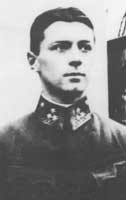
Franz Peter was an Austrian flying ace credited with six aerial victories in World War I while flying for Austria-Hungary's Imperial and Royal Aviation Troops.
Captain Konstantin Konstantinovich Vakulovsky was a World War I flying ace credited with six aerial victories. A major general's son, he volunteered for aviation duty on 8 August 1914, six days after graduating from university. He taught himself to fly, and became one of Russia's first military pilots on 13 June 1915. After escaping the fall of the Novogeorgievsk Fortress in a hazardous flight, Vakylovsky flew reconnaissance missions, some through heavy ground fire. Given command of the newly formed First Fighter Detachment, he became a flying ace credited with six aerial victories. He died in a flying accident during summer 1918.
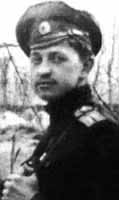
PodpolkovnikYevgraf Nikolaevich Kruten was a World War I flying ace credited with seven aerial victories. He began World War I as an aerial observer with three years experience in military aviation. After a year's seasoning, he was recommended for, and graduated from, pilot's training in September 1914. He rose through the ranks, to be appointed as his unit's commander on 6 June 1916. With his victory tally at three, he was forwarded to service with the French Aéronautique Militaire. While learning French aerial tactics, Kruten shot down a German aircraft during February 1917. After his return to Russia in March 1917, he shared his new-found knowledge in a flurry of booklets on military aviation. He commanded his battle group of three detachments, and ran his victory total to seven before dying in a landing accident on 19 June 1917.

StabsfeldwebelJohann Risztics (1895-1973) was an Austro-Hungarian World War I flying ace credited with seven reliably confirmed aerial victories. After his wounding early in World War I, he switched to aviation duty as a mechanic. He went for pilot training in 1915. Once trained, he shot down seven enemy fighter planes, winning five Medals for Bravery in the process. Postwar, he became a record-setting test pilot for Junkers.
Captain Vladimir Ivanovich Strzhizhevsky was a World War I flying ace. He volunteered for military service on 14 October 1914, after graduation from Petrograd Technical Institute. Incomplete and confusing records credit him with eight confirmed and four unconfirmed aerial victories during his 1916-1917 combat on the Romanian Front. His second wound ended his tally of aerial victories. The advent of the October Revolution saw him co-opted into the Red Air Force for the end of the war. On 4 November 1918, he defected to the White Russian Army, and served with them for two years. When they were expelled from Russia, Strzhizhevsky accompanied them. He became a Yugoslav citizen and joined their air force.

PoruchikDonat Aduiovich Makijonek was a World War I flying ace credited with eight aerial victories. He was the only ace of Polish ethnic heritage to fight against the Central Powers. In later life, he would help found Polish military aviation immediately after World War I, and fight in the Polish-Soviet War of 1919-1921.
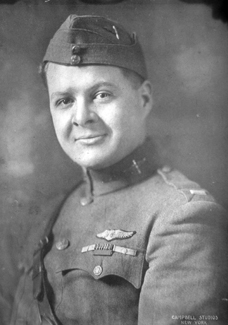
Paul Frank Baer was an American fighter pilot for the United States Army Air Service in World War I. He was credited with nine confirmed victories and seven unconfirmed victory claims, making him the first flying ace in American military aviation history.
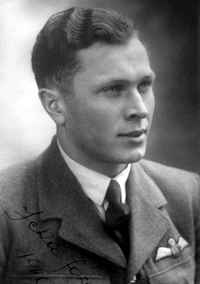
Józef Jeka (1917–1958) was a Polish fighter pilot who served in the Polish Defensive War and became an ace in the Battle of Britain. In the Second World War he shot down at least eight enemy aircraft, and survived being shot down twice.

Wiktor Komorowski was a Polish ace pilot in the Imperial Russian Air Force during World War I with six confirmed kills.


















